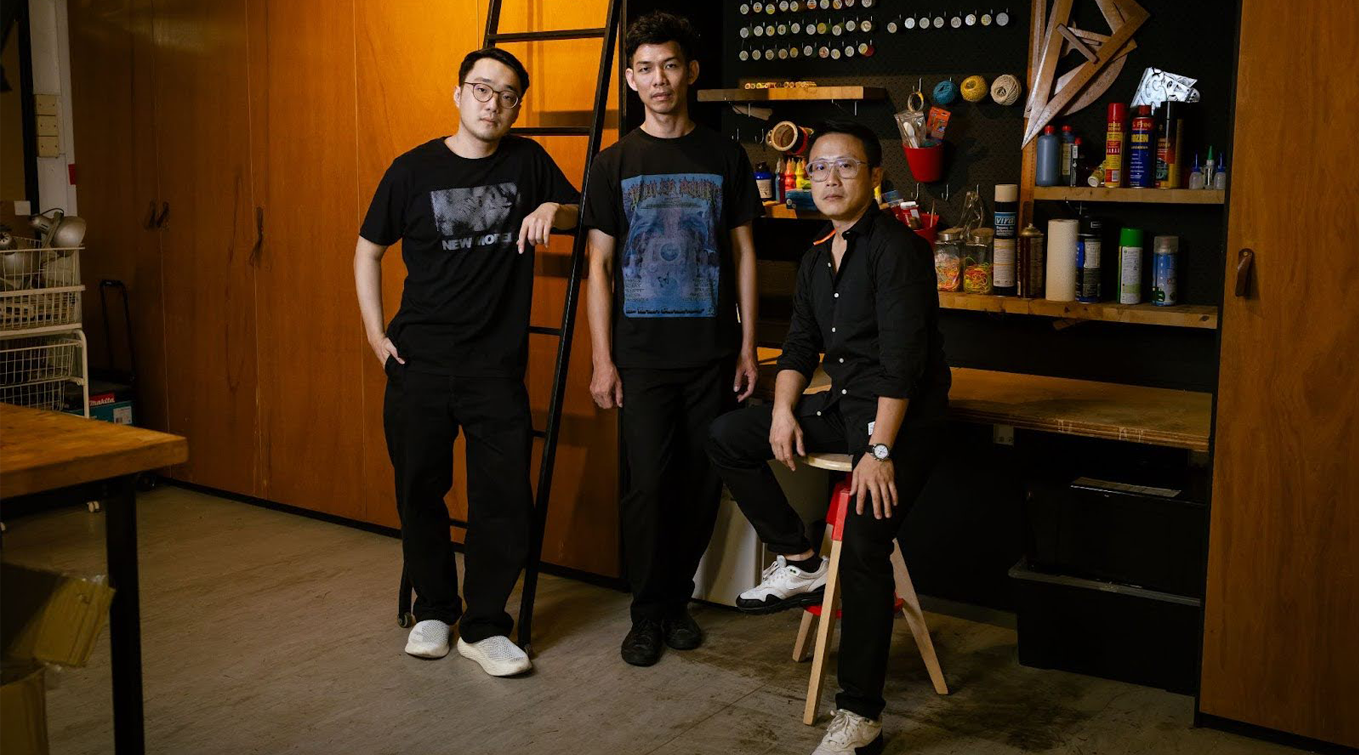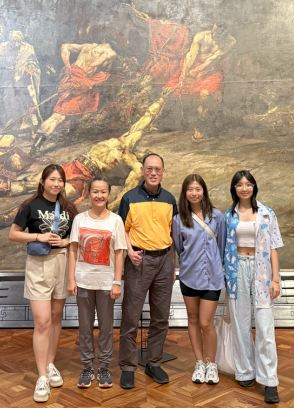From left: MA Design Class of 2025 students Darius Ou, Felix Sng and Ang Sheng Jin
For designers and creatives, there is no better teacher than the hard graft and hands-on work in the design, advertising and creative industries. Working on real-life projects and campaigns with actual clients, one’s skills and creative mettle are put to the test, all while responding to evolving trends, changing tastes and emerging tech’s implications on the industry.
What more, then, can an MA degree give to experienced designers already battle-hardened and recognised by the industry?
From this perspective, the decision by Class of 2025 MA Design graduands Ang Sheng Jin, Darius Ou and Felix Sng to pursue an MA would come to many as a surprise. Darius and Felix helm their own studios, while Sheng Jin is currently the Executive Creative Director for creative agency MullenLowe, following successful stints at 10AM Communications, JWT, McCann Erickson and Grey. Between the three of them, they have racked up international accolades including Cannes Lions, D&AD Awards and Young Guns and, in turn, also served on the juries for these awards.
Awards and recognition validate that the work has pushed the industry, while pursuing higher learning is a commitment to self-development.”
— Ang Sheng Jin
Would such professional experience and accolades not already be a sufficient testament of one’s success so far? Remarks Darius, “I feel like there are many different markers for success, and these markers can shift depending on career stages and time. What is important to me is continual learning.”
Sheng Jin concurs, summarising simply, “Awards and recognition validate that the work has pushed the industry, while pursuing higher learning is a commitment to self-development.”
A space for research, practice and community
Pragmatically, pursuing a master’s degree can help to buttress one’s professional achievement with a formal qualification to open up pathways to teaching design at institutions of higher learning. However, beyond that, it is also an opportunity to delve deeper into design practice through formal research—something that can be incredibly liberating after working in an industry where time can feel like a rare commodity amidst tight deadlines and client demands.
“Working in the industry does not always afford room and time to experiment, research and learn,” explains Darius. “As much as I love to do what I do, there are aspects of running a studio that can feel very monotonous and even restrictive at times.”
The switch from instant ideation to taking the time to pause and reflect can call for some internal recalibration, especially for a seasoned ad man like Sheng Jin. “The programme has broadened my perspective, especially in appreciating the value of research. I used to overlook this in favour of fast, idea-driven execution due to tight deadlines. In practice, I’ve always believed an idea must speak for itself, without over-relying on explanation. The creator is never beside their project to explain the work to the consumers.
“The MA has taught me to pause, reflect, and appreciate the value of research and design thinking—allowing me to see the bigger picture and approach problems with deeper insight and intention,” explains Sheng Jin.
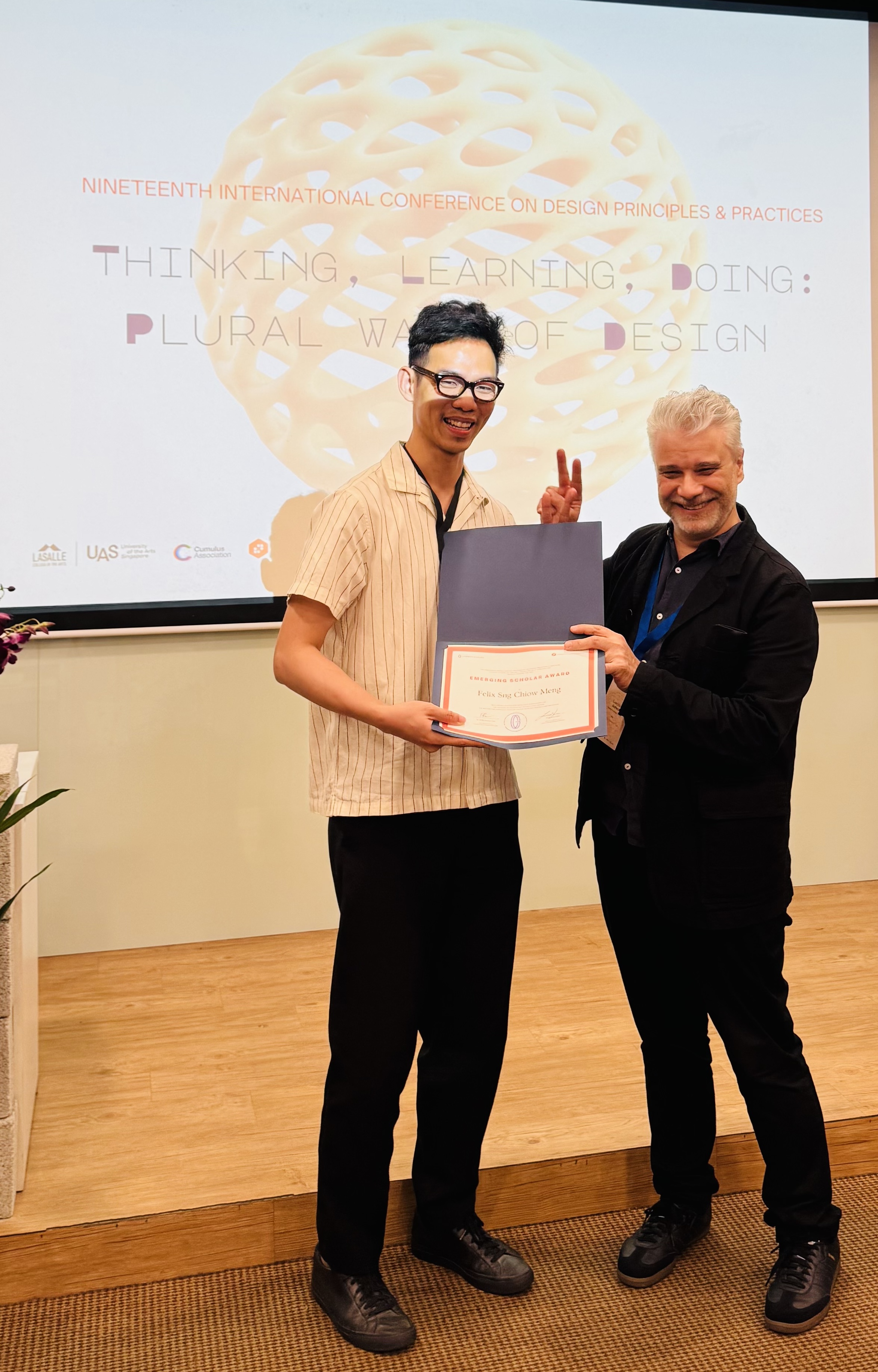
Seen in this light, rather than two unrelated tracks—one abstract and one practical—research and practice actually feed into one another. As Felix elaborates, “To me, academia and design practice run in parallel and one informs the other. The MA is then a chance to formalise and further explore research areas that are at the edges of my practice and skill sets.”
For Darius, whose regular practice incorporates time-intensive experimental projects such as Autotypography and 3D printed books, the MA Design programme provides community and external scrutiny into what can be an isolating endeavour.
“At some point, I recognised that these self-initiated hobbies and side projects hold the potential to scale significantly, benefitting from greater visibility and dialogue,” says Darius. “Participating in an academic setting allows for greater scrutiny and academic rigour. Having academic support facilitates easier engagement with other research initiatives and like-minded researchers. These aspects are challenging to achieve independently.”
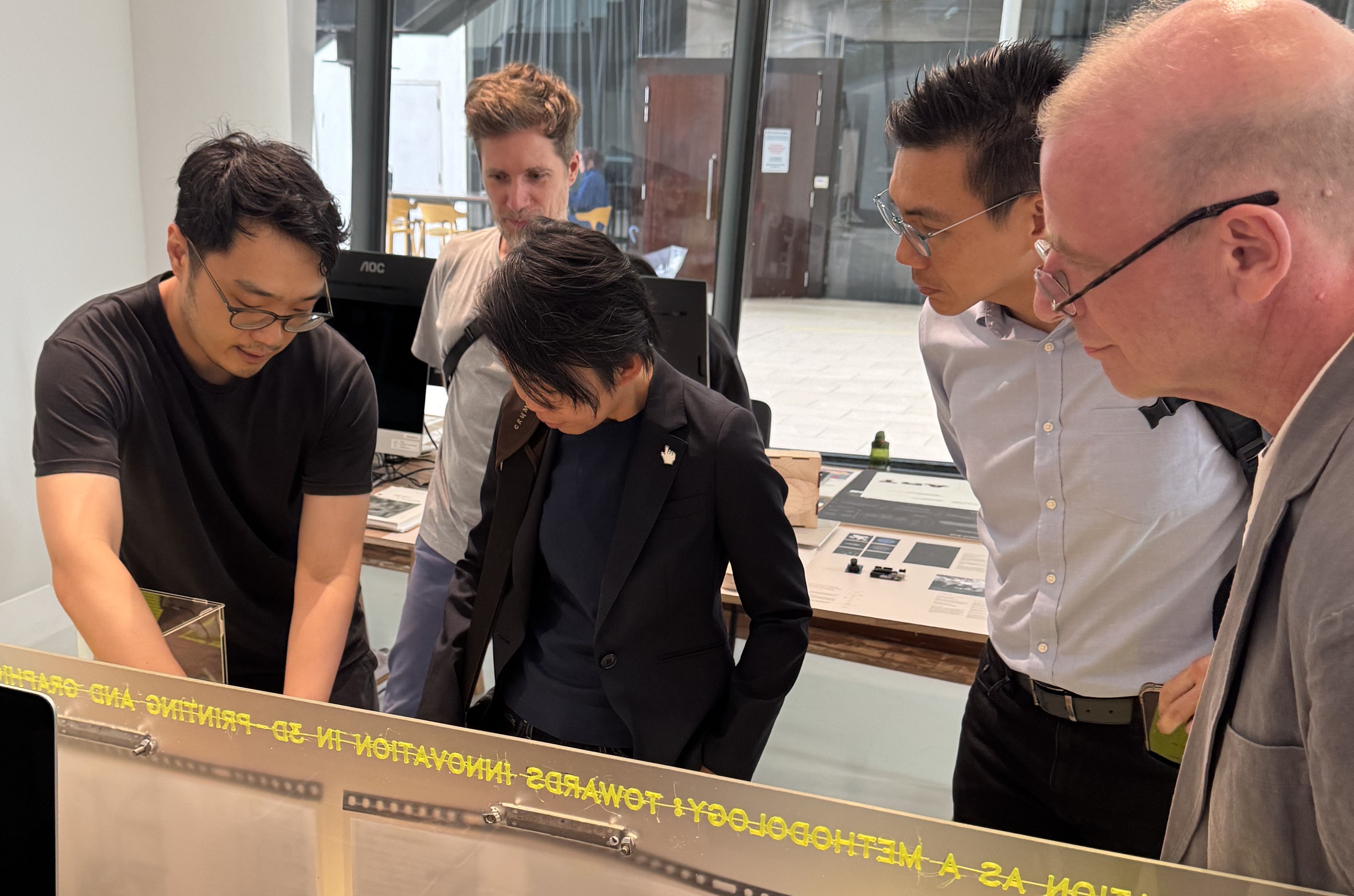
We speak to the trio about their experiences so far on the programme, their takeaways and impact on professional practice as well as how on earth they find the time to balance all of the demands from work and school.
The biggest question on everyone’s minds is how have you been able to juggle full-time work with postgraduate studies.
Felix: In all honesty, balancing studio work, teaching and school has been incredibly hectic—it's like a constant round of mental juggling while wearing multiple hats.
Darius: It can get hectic but for good reasons. With how rigorous the programme is, it can be challenging at times—especially when work and school timelines collide. There are times when compromises need to be made, but we make do!
Sheng Jin: Balancing school and work has been absolutely tough and taxing, with high demands from both ends. As a self-achiever, I constantly push for the best, never settling, never resting.
The support from my family, management and colleagues has been crucial in helping me manage my time and commitments. Likewise, my lecturers have been incredibly understanding of my work responsibilities, yet they’ve never lowered the bar. They have been continually challenging me to question and improve my design research. It’s a difficult journey, but one that’s deeply rewarding.
Has there been any new knowledge or research arising from the programme that surprised you, even with all your experience?
Sheng Jin: Absolutely. Despite my industry experience, the Critical Discourse in Design and Design Lab modules introduced me to a range of theories that have genuinely reshaped my thinking. The discussions and challenges presented by the lecturers pushed me to read more deeply and explore areas I never imagined I would, and finally derived on my design research topic. Concepts like regenerative design thinking and theories of planned behaviour have been particularly eye-opening and interesting.
What surprised me most is how these academic and design frameworks can offer fresh perspectives, and I’m now starting to apply this knowledge meaningfully in my current creative practice.
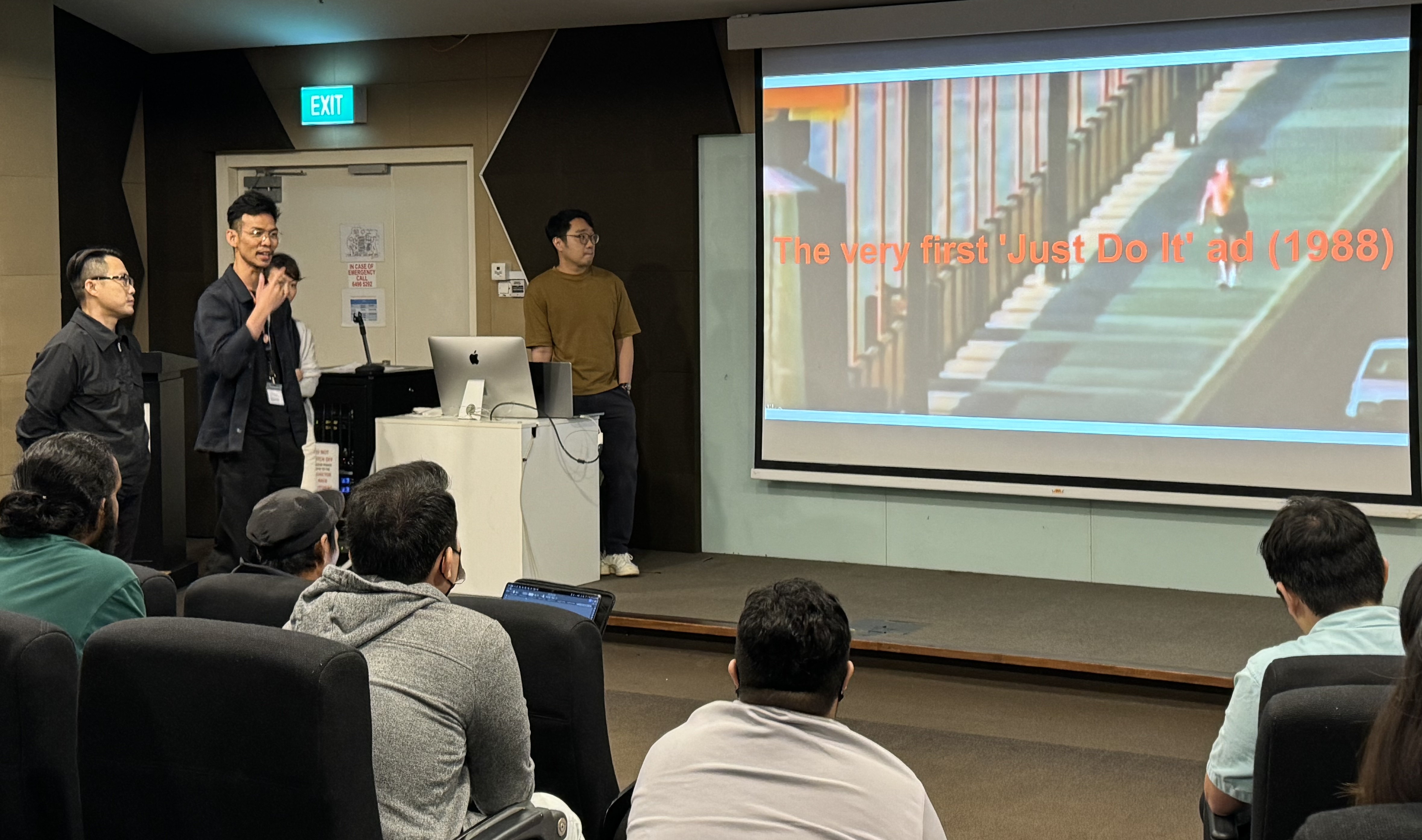
Felix: For sure, especially so when my research and project is pushing the edges of what I’m normally used to. It’s a bit of a risk but it also opens up space for exploration. That naturally requires me to pick up new knowledge and technical skill sets along the way.
The programme generally leans toward practice-based projects, so there is also a fair amount of thinking-through-making—but research provides the grounding that gives those experimentations depth and direction.
Darius: I think there are certainly both validations and contradictions arising from the data I have collected for or from the research and residencies as part of the programme, some are more surprising than others, but the programme offers space to fail and the time to try again (and again).
Have you seen your postgraduate experience make an impact in your own professional practice?
Felix: While I can’t say there’s an obvious direct translation to my studio practice yet—since my project’s focus is quite different from my day-to-day work—the academic exploration would have surely influenced how I approach creative challenges and perhaps also in teaching where I often have to tackle very different subject matters and try to frame different thoughts. I find that these shifts in mindset often seep into my work indirectly and I expect more tangible impacts to emerge as my practice continues to evolve.
Darius: I think I have always tried to situate my research to be in tandem with my practice and work. The programme allows me to test, reflect on and frame my research in applicable manners that would formalise the concepts and make sense in industry contexts. I have learned to put my thoughts into concise and effective framing. Most importantly, I am learning to write better.
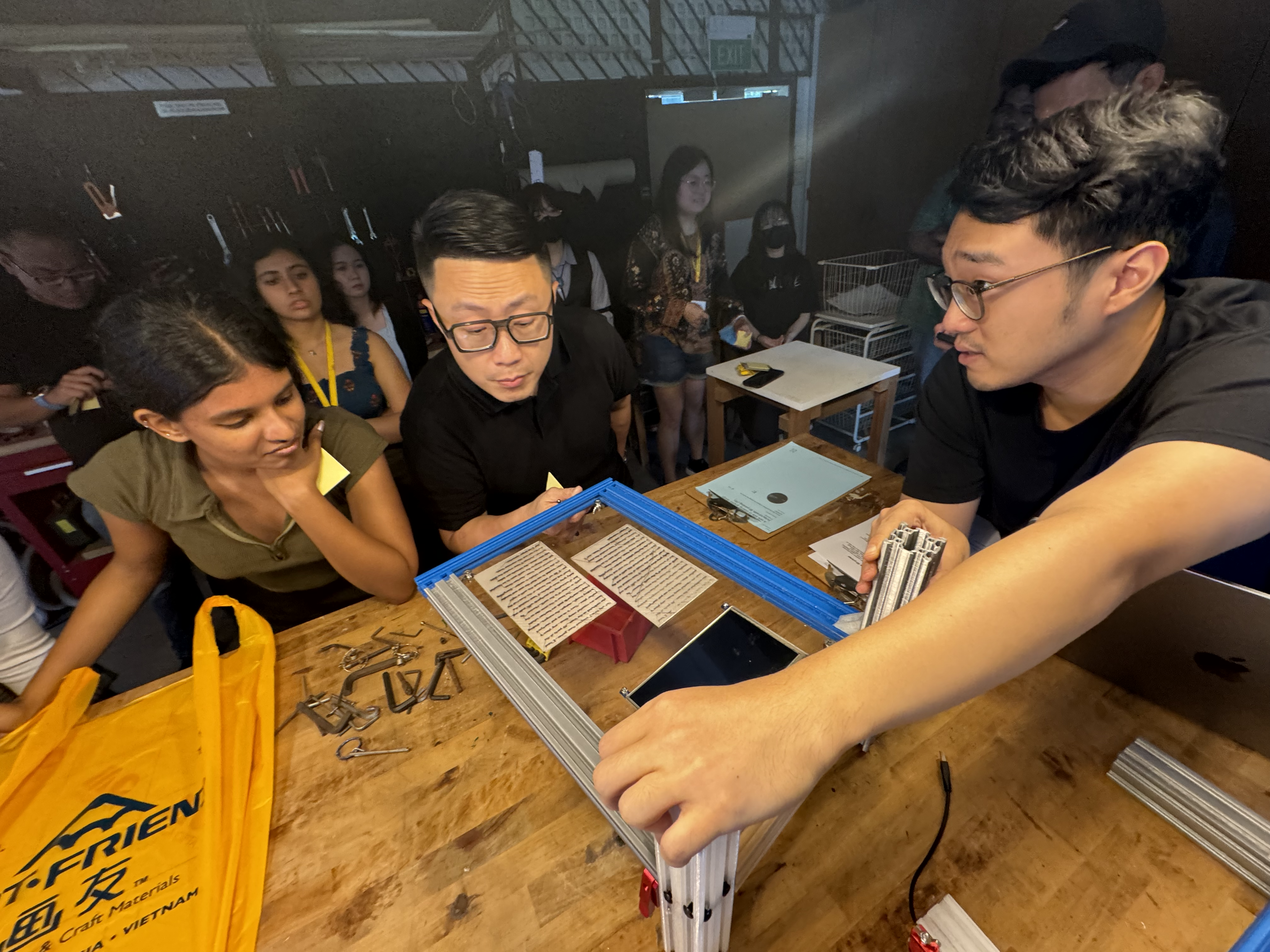
Sheng Jin: I see how research can strengthen the foundation of a concept. That said, I still believe research should lead to tangible outcomes, putting insights into practice and delivering real solutions is more important. Theory without execution is simply words without action—incomplete and useless.
For Felix and Sheng Jin, this is a sort of homecoming to LASALLE as a student once again. Having seen the institution from differing perspectives of student, industry professional and lecturer, what do you think distinguishes LASALLE's approach to design education?
Felix: From a personal perspective, I think there’s a sort of identity and culture that subtly shapes the way design is taught and understood here. It’s not always something you can easily articulate or define but it’s present—in the ecosystem, environment and openness of dialogue, as well as the freedom to experiment, the way criticality and creativity are often held in the same space and so on. That intangible quality creates a space that feels both familiar and continually evolving.
Sheng Jin: Looking at LASALLE now, the growth and change have been impressive. There’s a stronger emphasis on theory and research before ideation, yet the importance of ideas and execution in the work remains true to current trends and culture. The students are supported by industry-relevant lecturers who offer real-world clarity. It’s a far more robust and well-rounded preparation for the creative industry today.
What are you currently working on in your MA?
Darius: I am currently working on a touch-sensitive 3D-printed book, where users will be able to touch certain words on a page and experience auditory or visual cues. It is really challenging technically to get it to work but I am excited to get it made, after countless prototypes.
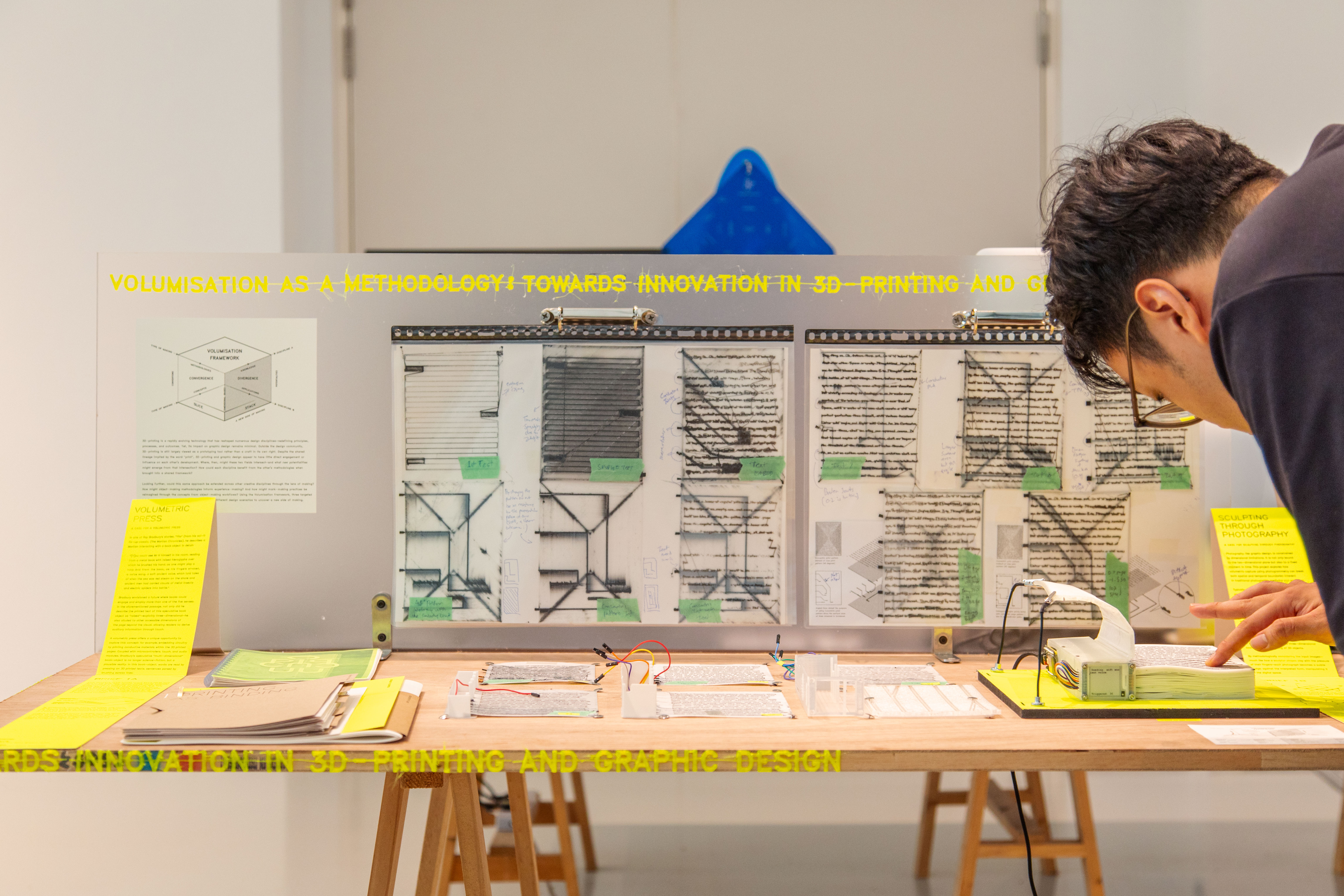
Felix: For my MA project I’m exploring interactive experiences at the intersection of physical and digital worlds through experimental prototyping. I did a short residency with an agency that I’ve been working with in the Web 3.0 space over the past few years. I’ve continued that relationship in the role of a digital producer, currently supporting a global campaign launch for a fashion brand. Though I’m only able to commit to a limited support role, it’s been a great experience.
Sheng Jin: My current design research project explores how design can serve as a "carbon handprint", a positive contribution toward reducing our carbon footprint, by reimagining used cooking oil, a humble and often overlooked household material, as a sustainable resource.
It’s a way to rethink everyday waste and use design to reframe it as a tool for regenerative impact. It’s been eye-opening to connect new sustainability methods with design prototypes in a tangible and relevant real-world context.
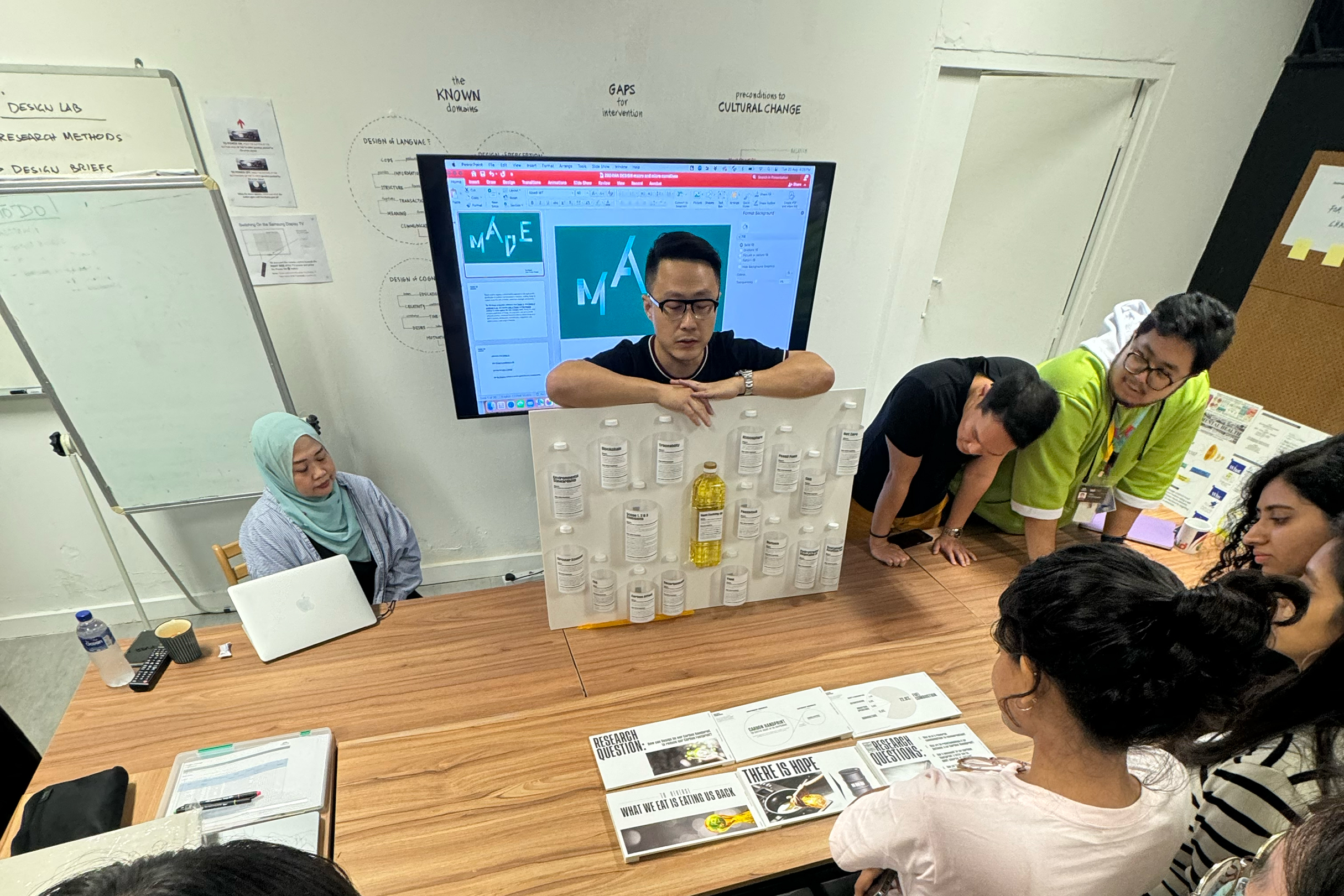
What is your advice to designers who might be undecided about whether to return to school for an MA?
Sheng Jin: My advice to designers considering an MA is to stay curious and open. There are windows of learning just waiting to be discovered. Like a game character, you will start to unlock new skills, gain fresh perspectives, and even uncover sides of yourself you didn’t know existed. It’s like levelling up in your creative journey. Yes, it’s demanding, but time is what you make of it. Stay focused on your end goal, and you’ll find the growth is worth every challenge.
Felix: Come in with an intent, but be open to organic growth and exploration because that’s when you’ll start to expand your practice. Researching in areas of your interests would be helpful—if your project evolves into a blend of work and play, you’ll find yourself in a nice creative spot.
Darius: It is certainly a commitment, especially if you are thinking of working and studying at the same time. But it is and will be worth it!
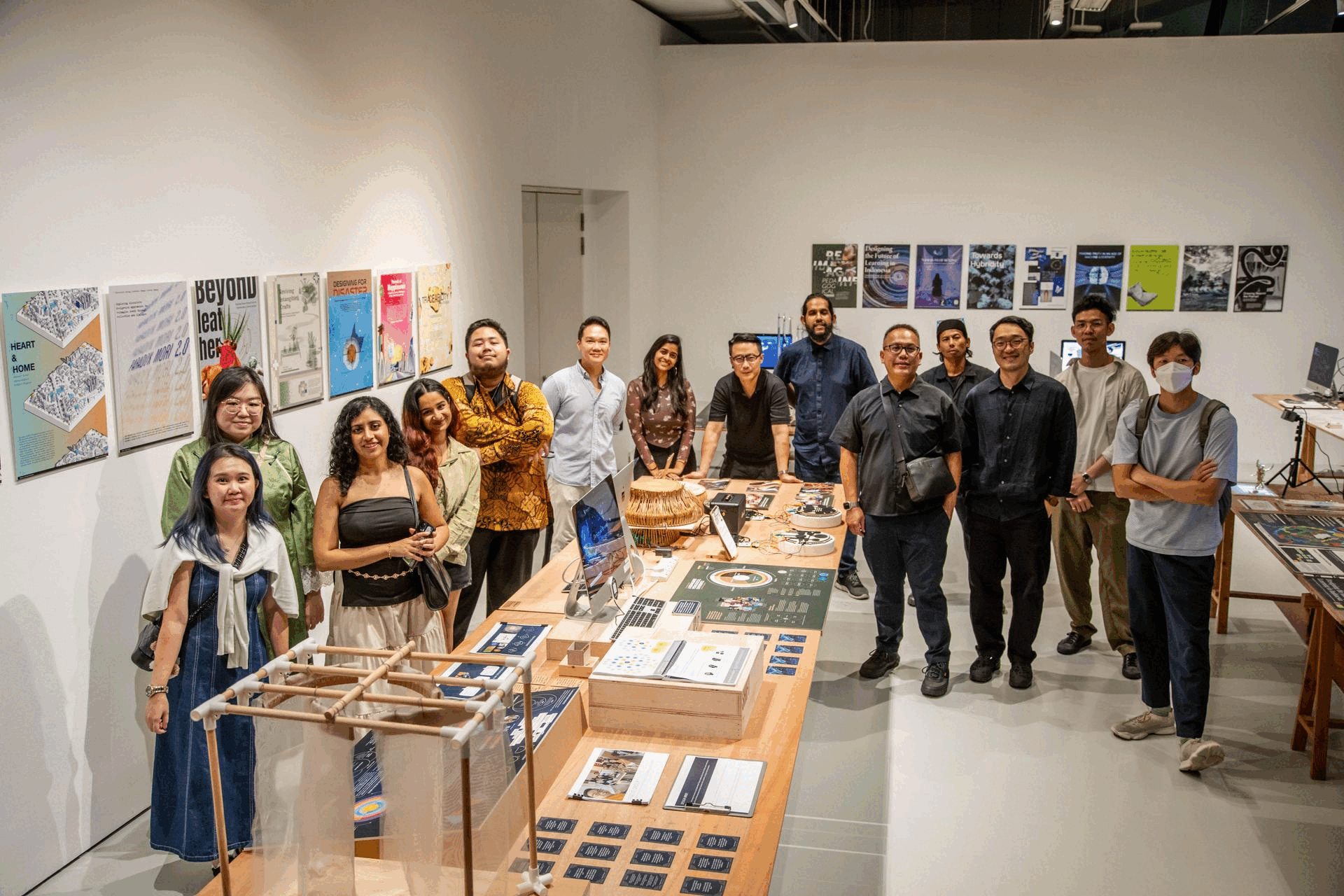
Join LASALLE's one-year MA Design programme and be a part of a community of agile, critical and industry-savvy designers. Apply now for our postgraduate programmes.

